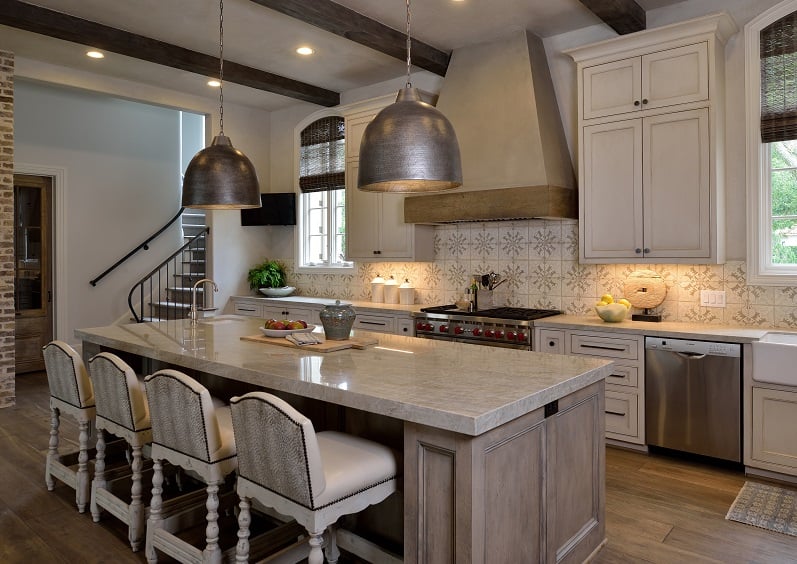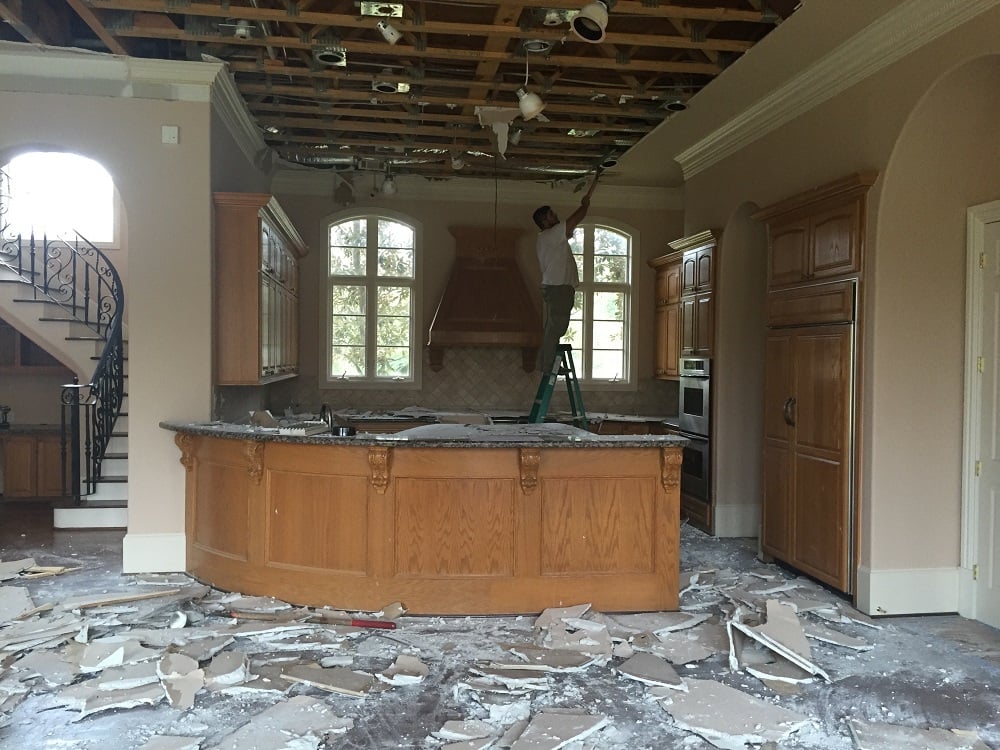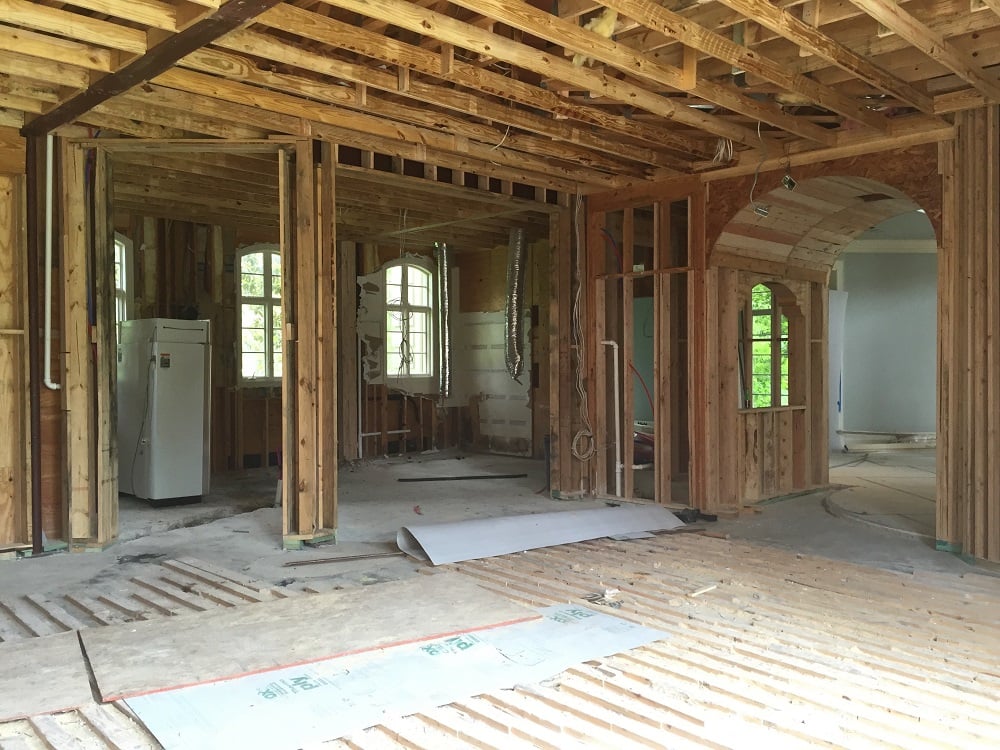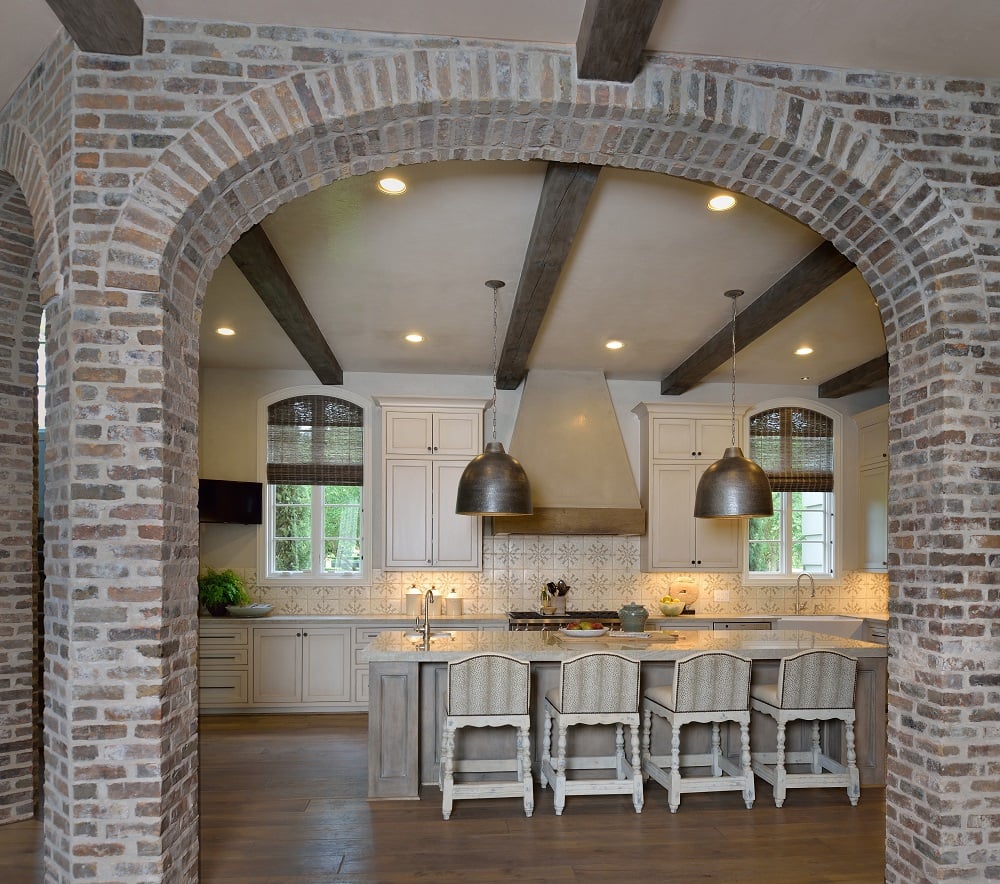 In their own way, renovations can be every bit as exciting and rewarding as building a new custom home from scratch. Maybe you’ve lived in a house for years and decided that it’s time for a bit of an upgrade or maybe you’ve bought an old property that needs a good dose of TLC before it reaches dream-home status. Renovating gives you the opportunity to shape any space to your exact needs. There’s something really wonderful about transforming what’s there into what’s possible, but the road to a perfect renovated home rarely runs smoothly. The passing of time can be hard on homes, and once renovation begins, it is quite common to find previously unexpected issues hiding under that old wallpaper.
In their own way, renovations can be every bit as exciting and rewarding as building a new custom home from scratch. Maybe you’ve lived in a house for years and decided that it’s time for a bit of an upgrade or maybe you’ve bought an old property that needs a good dose of TLC before it reaches dream-home status. Renovating gives you the opportunity to shape any space to your exact needs. There’s something really wonderful about transforming what’s there into what’s possible, but the road to a perfect renovated home rarely runs smoothly. The passing of time can be hard on homes, and once renovation begins, it is quite common to find previously unexpected issues hiding under that old wallpaper.
While hidden problems can happen to any renovation project, they should never stand in the way of your dreams for your home. We’ve spent decades in the construction and renovation business, which means we’ve seen a lot. We know what can go wrong, and we know what’s required to make it right. When it comes to common renovation issues, knowing what to look for and what to expect is half the battle. That’s why today we’re going to talk about the issues we see most often, how they can impact a renovation project, and what should be done about them.
Water Damage
Water damage is a serious but frequent issue for homeowners, and it is the cause of a lot of renovation headaches. Sometimes it starts with a leak in the roof, which can go undetected until the water works its way through the ceiling. Water damage can also be caused by faulty plumbing: a broken or leaky pipe. It can be sneaky. In some cases, you may not even realize that there was a leak until the walls are opened up for renovation. Water damage can also be dramatic, with flooding at the top of that list. No matter how it happened, the effects can be drastic, from rotten wood and plaster to mold, mildew, and termites. If water damage is uncovered during renovation, your builder will make sure, first of all, that any structural and roofing issues are addressed and fully repaired. They may need to bring in a number of specialists to deal with secondary issues such as mold removal, to ensure that your house is a safe and healthy environment for your family.
Foundation Cracks and Other Issues
Discovering a foundation crack during a renovation is up there on the list of homeowner nightmares. Sometimes the problem is diagnosed by the appearance of cracks in walls and floors, gaps along the edges of rooms, or doors and windows that stick. Occasionally the issue is discovered during site work. Foundations do not always stand the test of time: sometimes the type of cement used in old houses can begin to crumble. Older houses may have grading issues which affected water runoff: retained water can cause the soil under the house to expand, threatening the integrity of the foundation. The weight of the house and the settling of the earth underneath can also put pressure on the foundation, causing the concrete to crack and buckle. Whatever has caused the foundation damage, it can be very costly to fix.
If foundation cracks are suspected, a structural engineer will need to inspect the house to see how extensive the problem is and to recommend a plan to fix it. Your builder may be able to address the damage in several ways. In some cases, steel braces bolted onto the house can be enough to stabilize the foundation. In others, the foundation may need to be underpinned with helical screws or concrete piers. In the most extreme instances, an entirely new foundation may be required.
When we build our new homes, we use structural foundations to extend their potential lifespans and ensure the safety and longevity of the build. Special void boxes (also known as void forms) are placed before the slab is poured. The void boxes protect the concrete while it sets, which can make the foundation stronger. They also allow soils to swell and shift without cracking the foundation.
 Unsafe Materials
Unsafe Materials
Sometimes “they don’t make them like they used to” for good reasons. Old, dangerous materials can turn up during the renovation and will need to be dealt with. These hazardous materials require special handling and disposal. The Environmental Protection Agency (EPA) has rules and guidelines that your builder will need to follow. Laws vary between jurisdictions, but in many cases, licensed remediators and specialist contractors may need to be called in to ensure that these issues are dealt with safely and effectively.
- Lead is a serious health hazard that commonly shows up in old home renovations. It can sometimes be found in the interior or exterior paint finishes, and in old plumbing pipes.
- Asbestos sometimes turns up behind walls, in the basement, in the attic, or in ceilings. In some cases, it is safer to leave it where it is and contain it. In others, it will need to be removed by an expert.
Outdated Plumbing and Electrical Work
Building codes change over time, and your renovation project may reveal that your plumbing and electrical systems are so old that they are no longer up to code.
- Old plumbing from before the 1960s generally used galvanized pipes. These are prone to corrosion, clogging, and leaking. These elderly galvanized pipes should be replaced for health reasons and to protect your home from future water damage. Common modern pipe materials include PVC, CPVC or copper. We use the cutting-edge PEX pipe as it’s more flexible, easier to use, faster to install, and much less expensive than copper. It’s also much more reliable than either copper or CPVC.
- At best, old electrical wiring may not be able to handle the demands of modern appliances. At worst, it can pose a dangerous fire risk. In any case, it is best to do whatever is necessary to bring it up to present standards. This will usually include making sure that all sockets are grounded. Your wiring should also include a ground-fault circuit interrupter, or GFCI. This quick circuit breaker will cut off electric power in the event of a ground-fault (in 1/40th of a second) and will help prevent house fires.
Layers of Bad Renovation Work
Sometimes you’re not the first person to take a crack at remodeling or renovating a house. Multiple homeowners doing bad renovation work over generations can leave a legacy of problems that can be costly to undo. As your renovation commences, it is possible to uncover an archaeological dig full of poor workmanship. A shoddy extension, uneven carpentry, and old mistakes perpetrated by home handymen or inexperienced contractors may need to be dismantled before any new work can be done, or you can risk ruining the final finish and result.

How to Prepare for the Unexpected During Your Home Renovation
This list may be daunting when you read it all laid out like that, but it shouldn’t scare you away from the idea of a renovation. There are horror stories out there, but in the hands of an experienced builder, these renovation challenges (and many more) are all in a day’s work. You can also take steps to ensure that you’re as ready as possible for any unforeseen problems.
Call in the Experts Early
The sooner you can get experienced professionals on site, the better. Builders and engineers can help you understand what you’re looking at before you dive into a project. Knowing ahead of time what you might face during the renovation process can make everything so much easier (no one likes nasty surprises in the middle of a project). Once you have a good sense of the project scope, your architect and builder can work together to solve any problems so that you and your home can move forward into a beautiful, comfortable, and structurally sound future!
Stay Flexible, Stay Positive
Adaptability and a sense of humor will get you far in a renovation project. That’s easier said than done when you’re facing something that’s just come out of left field, but it really does make all the difference. If you’ve hand-picked a dedicated, experienced, and trustworthy team, you can lean on them to help you through the renovation process smoothly, no matter what. With good organization and strong communication, you and your builder can handle whatever comes up. Don’t let renovation stress ruin the experience for you and your family: that’s something we’ve learned over 30 years on the job. We make a point of maintaining strong, positive relationships over everything else, even when things get frustrating. It’s always worth it in the end.

Build Wiggle Room into Your Budget
Renovation issues can be exponentially more difficult to deal with if you’re running out of money. Giving yourself a healthy margin for any unanticipated expenses that could crop up is one of the best things you can do to keep stress levels down throughout your project. That way, if your renovation exposes more issues than you thought it would, you don’t have to change your plans or cut back on finishes to make up for it. You can simply regroup with your builder and forge ahead until your home is everything you’ve hoped for.
Renovating a house is one of the most satisfying projects out there: the transformations and the joy our families take in the final result makes everything worthwhile. If you’re considering a renovation project but are nervous about what might be involved, please feel free to get in touch. We’d be delighted to help set your mind at ease.





COMMENT ON THIS ARTICLE